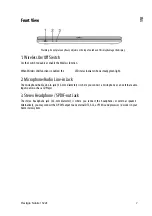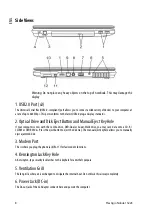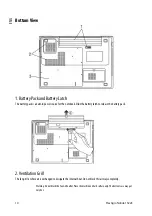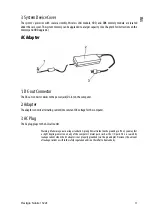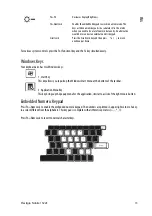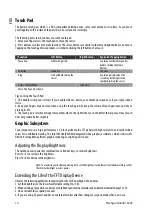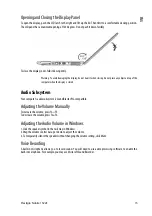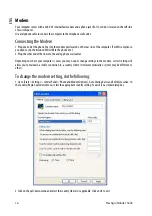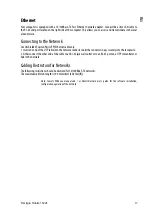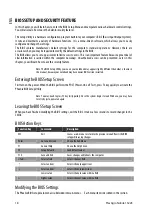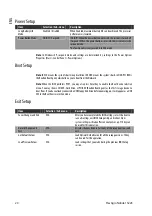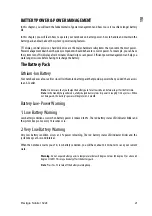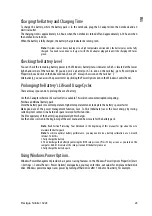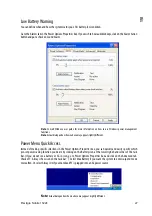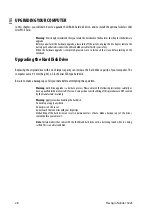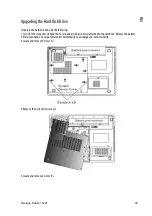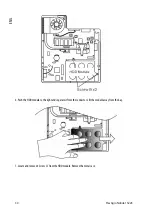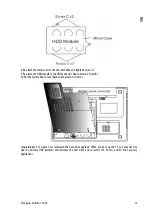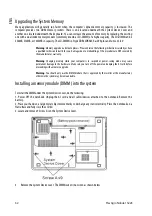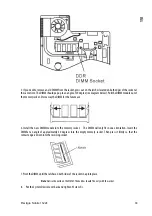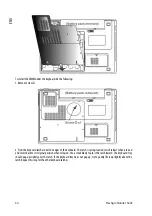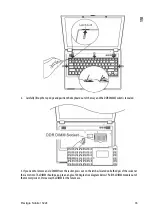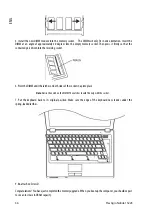
Prestigio Nobile 1522E
21
ENG
BATTERY POWER & POWER MANAGEMENT
In this chapter, you will learn the fundamentals of power management and how to use it to achieve longer battery
life.
In this chapter, you will learn how to operate your notebook on battery power, how to handle and maintain the
battery pack, and learn about the system’s power saving features.
TFT display, central processor, hard disk drive are the major hardware subsystems that consume the most power.
Power management deals how these key components should behave to conserve power. For example, you can have
the system turn off its display after 2 minutes of inactivity to save power. Efficient power management can help you
work longer sessions before having to recharge the battery.
The Battery Pack
Lithium-Ion Battery
Your notebook uses a four-cell (or six-cell) Lithium-Ion battery pack that provides power when you don’t have access
to an AC outlet.
Note
: It is necessary that you charge the battery pack for at least 6 hours before using it for the first time.
Note
: In the Standby Suspend mode, a fully charged battery loses its power in roughly 1/2 day or less. When
not being used, the battery’s power will deplete in 1-2 month.
Battery Low-Power Warning
1. Low Battery Warning
Low battery condition occurs when battery power is reduced to 6%. The red battery status LED indicator blinks and
the system beeps once every 16 seconds or so.
2. Very Low Battery Warning
Very Low battery condition occurs at 3 % power remaining. The red battery status LED indicator blinks and the
system beeps at 4-second interval.
When the notebook warns you of its low battery condition, you will have about 3-5 minutes to save your current
work.
Warning
: Do not expose battery packs to temperatures below 0 degree Celsius (32 degree F) or above 60
degree C (140F). This may adversely affect the battery pack.
Note
: Press Fn+F3 to turn off the battery warning beep.

